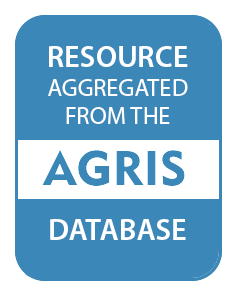About Springer
Throughout the world, we provide scientific and professional communities with superior specialist information – produced by authors and colleagues across cultures in a nurtured collegial atmosphere of which we are justifiably proud.
We foster communication among our customers – researchers, students and professionals – enabling them to work more efficiently, thereby advancing knowledge and learning. Our dynamic growth allows us to invest continually all over the world.
We think ahead, move fast and promote change: creative business models, inventive products, and mutually beneficial international partnerships have established us as a trusted supplier and pioneer in the information age.
Members:
Resources
Displaying 31 - 35 of 1196Landscape Dynamics, Soils and Hydrological Processes in Varied Climates
Global linkages among energy, food and water: an economic assessment
The resolution adopted by the General Assembly of the United Nations on 25 September 2015 is symptomatic of the water-energy-food (WEF) nexus. It postulates goals and related targets for 2030 that include (1) End hunger, achieve food security and improved nutrition, and promote sustainable agriculture (SDG2); (2) Ensure availability and sustainable management of water and sanitation for all (SDG6); and (3) Ensure access to affordable, reliable, sustainable, and modern energy for all (SDG7).
Micro-scale urban surface temperatures are related to land-cover features and residential heat related health impacts in Phoenix, AZ USA
CONTEXT: With rapidly expanding urban regions, the effects of land cover changes on urban surface temperatures and the consequences of these changes for human health are becoming progressively larger problems. OBJECTIVES: We investigated residential parcel and neighborhood scale variations in urban land surface temperature, land cover, and residents’ perceptions of landscapes and heat illnesses in the subtropical desert city of Phoenix, AZ USA.
Spatial driving forces of dominant land use/land cover transformations in the Dongjiang River watershed, Southern China
Information about changes in, and causes of, land use/land cover (LULC) is crucial for land use resource planning. We investigated the processes involved in LULC change (LUCC) in the Dongjiang Watershed, in Southern China, over a 15-year period to gain a better understanding of the causes of the main types of LUCC. Using a depth transition matrix and redundancy analysis (RDA), the major types and causes of LUCC for each LULC type over the past 15 years were identified. LUCC exhibited obvious net change, relatively low persistence, and high swap change.
Effects of land use and land cover on selected soil quality indicators in the headwater area of the Blue Nile basin of Ethiopia
Understanding changes in soil quality resulting from land use and land management changes is important to design sustainable land management plans or interventions. This study evaluated the influence of land use and land cover (LULC) on key soil quality indicators (SQIs) within a small watershed (Jedeb) in the Blue Nile Basin of Ethiopia. Factor analysis based on principal component analysis (PCA) was used to determine different SQIs.



